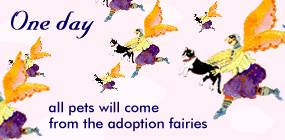http://www.economist.com/printeditio...ory_ID=3644303
Love me, love my dog
Feb 10th 2005
From The Economist print edition
Dogs and their owners really do resemble one another
A FEW years ago, some researchers studying human mating patterns tried the following experiment. They took photographs of individuals in established relationships, mixed them together, and asked their experimental subjects to pair up likely looking couples from the pictures. More often than chance, the photo-couples thus created were also real couples.
This is an example of what biologists call assortative matingâthat who chooses whom (and also who is willing to be thus chosen)âis to some extent predictable. But despite the corny observation that owners grow to look like their dogs and vice versa, no one really expected the same rules to apply to people and their pets.
But it seems they do. A paper published in the Journal of Ethology by Christina Payne and Klaus Jaffe, of Simón BolÃ_var University in Venezuela, describes a visit they made to the National Canine Exposition in Caracas. There, they photographed 36 purebred dogs and their 36 owners. The pictures were manipulated to remove the background and the owners' clothing (fear notâthe clothes were just blanked out to create a shot of the head). The prints were then split into six groups of pairs, and each group was shuffled.
Dr Payne and Dr Jaffe asked their volunteers to try to guess which dogs within a group belonged to which human. As in the case of human couples, correct guesses were made significantly more often than chance. It seems, therefore, that owners really do resemble their dogs.
That is not, however, because dog and owner have grown alike over the years. Dr Payne and Dr Jaffe checked this by looking at the correlation between the likelihood of a volunteer making a correct pairing and the amount of time dog and human had cohabited. There was none.
More intriguingly, the volunteers were unable to make reliable pairs in a follow-up study in which the dogs involved were mongrels rather than pedigree. That, the two researchers reckon, may be the key to the mystery. When you buy a pedigree puppy you have a good idea what the adult will look like. Not so with a mongrel.
Although they have yet to prove it, the hypothesis that Dr Payne and Dr Jaffe are considering is that people's preferences for dogs that resemble themselves is an accidental manifestation of another phenomenon. This is the well-established observation that people are more trusting of those who look somewhat like them, presumably because resemblance suggests genetic relatedness. In experiments where contestants have to bargain for money, for example, a potential âbusinessâ partner elicits more trust if he or she has a face similar to the bargainer. And if dogs are truly man's best friend, then trust is surely an important part of the friendship.
If I look like any of them (and they chose us) it would be Peanut lol!










 Reply With Quote
Reply With Quote
Bookmarks